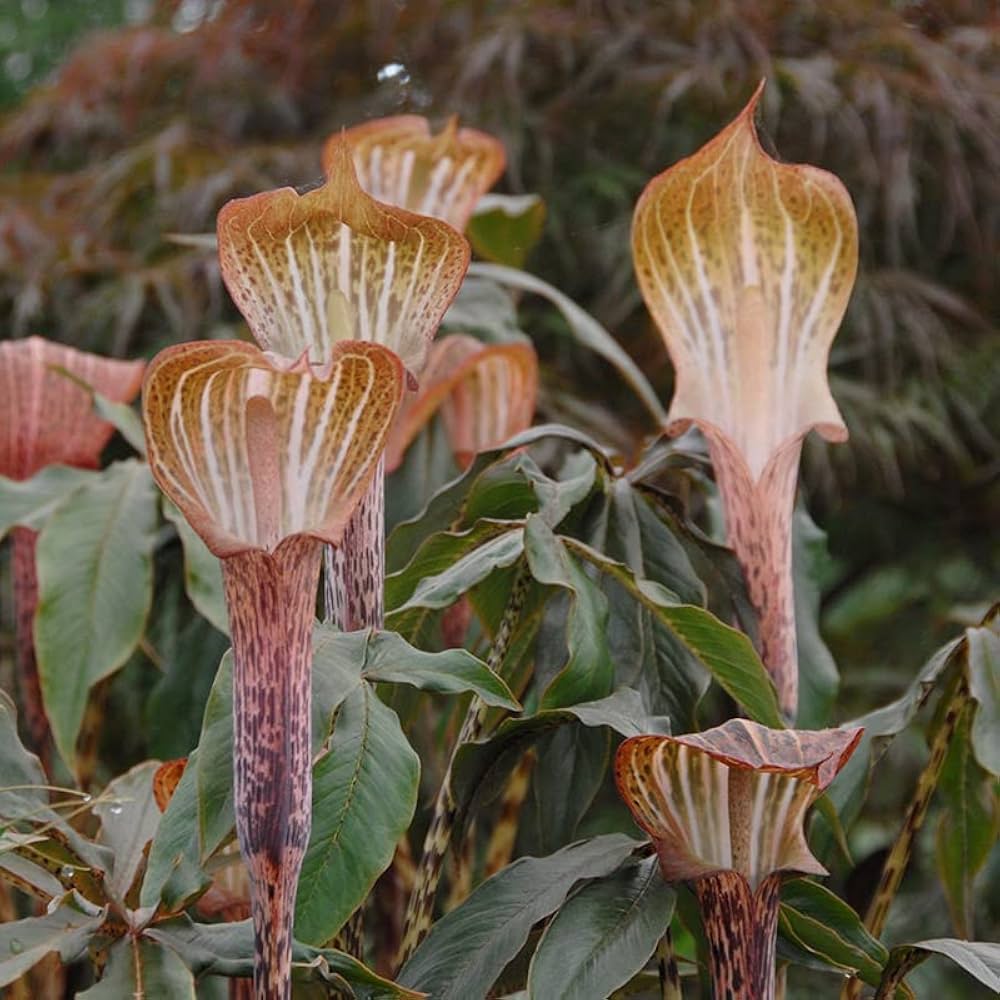Voodoo Lily Amorphophallus konjac Flower Seeds for Planting in Exotic Garden
Couldn't load pickup availability
Description
Rare Voodoo Lily Snake Lily Flower Seeds
Characteristics and Uses of Rare Voodoo Lily Snake Lily Plants
The Rare Voodoo Lily, also known as the Snake Lily, is a fascinating and exotic plant renowned for its striking appearance and unique flowering structure. These non-GMO seeds produce plants that can reach heights of 2 to 3 feet, featuring large, dramatic leaves and an unusual flower that resembles a snake in shape. The Voodoo Lily is not only a conversation starter in any garden but also serves as a captivating focal point in floral arrangements. Its intriguing scent, reminiscent of rotting flesh, attracts pollinators such as flies, making it a unique addition to any botanical collection.
Growing Conditions for Rare Voodoo Lily Snake Lily Plants
- Light Requirements: Prefers partial shade to full sun, requiring at least 4-6 hours of indirect sunlight each day.
- Soil Type: Thrives in well-draining, rich, organic soil that retains moisture without becoming waterlogged.
- Temperature: Best suited for warm temperatures, ideally between 65°F and 80°F for optimal growth.
Planting Tips for Rare Voodoo Lily Snake Lily
- Timing: Sow seeds indoors in early spring or directly outdoors after the last frost date.
- Depth: Plant seeds about 1 inch deep in the soil, ensuring they are adequately covered.
- Spacing: Space plants 12-18 inches apart to allow for proper air circulation and growth.
Watering Instructions and Tips
- Watering Frequency: Water regularly, keeping the soil consistently moist but not soggy, especially during the growing season.
- Mulching: Apply a layer of mulch around the base to help retain moisture and suppress weeds.
- Signs of Underwatering: Look for wilting leaves or dry soil as indicators that your plants need more water.
Growing Zones
Rare Voodoo Lily Snake Lily plants are well-suited for USDA zones 7-and can adapt to various global climates, making them a versatile choice for gardeners looking to cultivate this exotic flower.
Key Benefits & Uses
- Unique Appearance: Offers a striking and unusual flower that adds intrigue to any garden or collection.
- Pollinator Attraction: The unique scent attracts specific pollinators, contributing to biodiversity in your garden.
- Low Maintenance: Requires minimal care once established, making it suitable for both novice and experienced gardeners.
Best Uses in the Garden & Landscape
- Exotic Gardens: Ideal for creating a tropical or exotic-themed garden, providing a unique focal point.
- Container Gardening: Perfect for pots and planters, allowing for easy mobility and display.
- Botanical Collections: A great addition to botanical gardens or collections, showcasing rare and unusual plants.
Conclusion
Rare Voodoo Lily Snake Lily flower seeds from bijaseeds are an excellent choice for gardeners looking to cultivate a unique and exotic plant. With their distinctive characteristics and numerous benefits, these non-GMO seeds are perfect for enhancing any garden space. bijaseeds is a big, trusted name in the seed world, offering a wide range of high-quality, non-GMO varieties to gardeners everywhere.
FAQ
How do I grow Rare Voodoo Lily Snake Lily from seeds?
To grow Rare Voodoo Lily Snake Lily from seeds, start by planting them in well-draining soil in a location that receives partial shade to full sun. Water regularly, keeping the soil moist but not soggy for optimal growth.
When is the best time to plant Rare Voodoo Lily Snake Lily seeds?
The best time to plant Rare Voodoo Lily Snake Lily seeds is in early spring after the last frost. If starting indoors, aim for 6-8 weeks before the last frost date to ensure healthy seedlings.
Are Rare Voodoo Lily Snake Lily plants difficult to grow?
Rare Voodoo Lily Snake Lily plants are relatively easy to grow, making them suitable for gardeners of all skill levels. With proper care, including adequate sunlight, watering, and spacing, they can thrive and produce their unique flowers.



